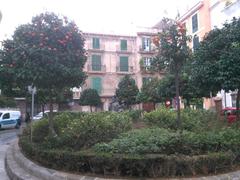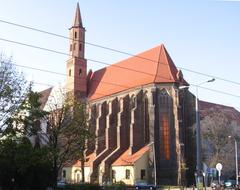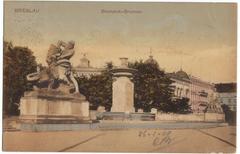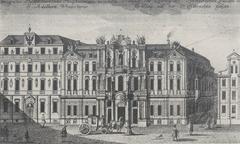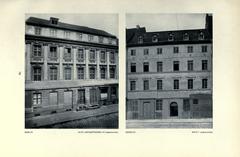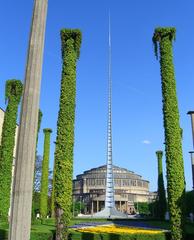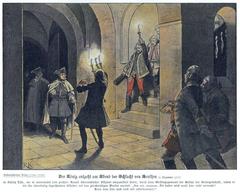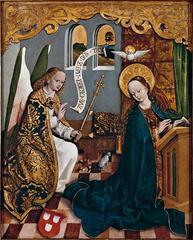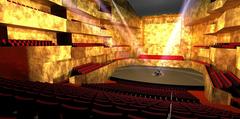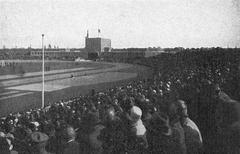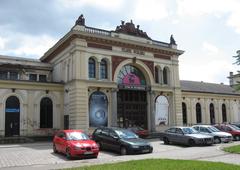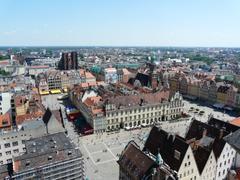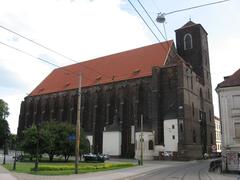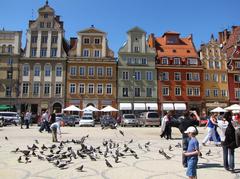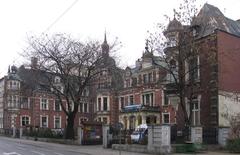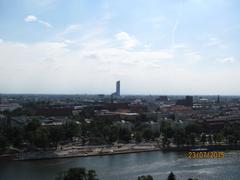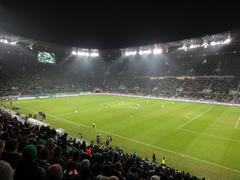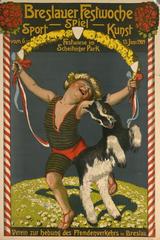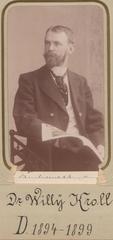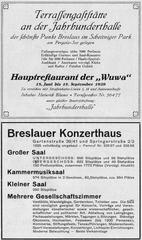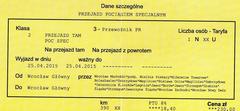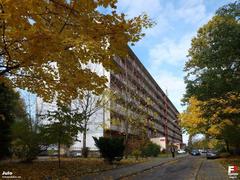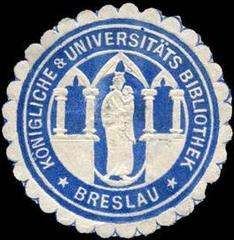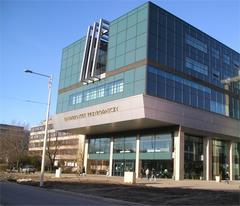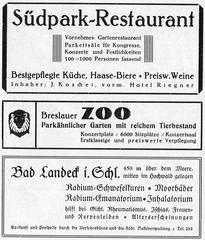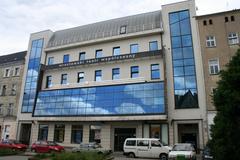
Comprehensive Guide to Visiting Wrocław, Lower Silesian Voivodeship, Poland
Date: 13/08/2024
Captivating Introduction
Welcome to Wrocław, the crown jewel of Lower Silesian Voivodeship, Poland—a city that effortlessly marries the past with the present. Imagine a place where over 300 bronze dwarfs play hide and seek amidst Gothic cathedrals, Baroque palaces, and bustling market squares. Known as ‘Poland’s Venice,’ Wrocław is a city that will captivate your heart and senses from the moment you arrive. From its early beginnings in the Stone Age to becoming a political powerhouse in the medieval period, Wrocław’s history is as rich and complex as its architectural heritage (Britannica). Picture yourself walking through time, from the fortified walls of its medieval past to the vibrant cultural scene of today. With canals weaving through the urban landscape and a history that reads like an epic novel, Wrocław is a living, breathing testament to resilience and rebirth (Wikipedia). Dive into this comprehensive guide to discover Wrocław’s hidden gems, local secrets, and vibrant festivals. Whether you’re a history buff, an art lover, or a foodie, Wrocław has something to offer for everyone. And for an even more immersive experience, download Audiala, our tour guide app, to make your exploration even more exciting!
Table of Contents
- Historical Overview
- Hidden Gems and Local Secrets
- Visitor Tips with a Twist
- Seasonal Highlights
- Fun Challenges and Mini-Quests
- Local Lingo Lessons
- Engaging Stories
- FAQs
Historical Overview of Wrocław
A Journey Through Time: Wrocław’s Rich Tapestry
Early Beginnings and Medieval Period
Ever wondered what it’s like to walk through a city over a thousand years old? Wrocław’s history begins in the Stone Age, where early settlers first laid roots. Fast forward to around 940 AD, when Duke Mieszko I of Poland conquered Silesia and set up shop on the picturesque Ostrów Tumski, also known as Cathedral Island. Imagine the hustle and bustle of traders along the Via Regia and Amber Road (Britannica).
In 1000 AD, King Bolesław I the Brave established a bishopric here during the Congress of Gniezno, marking Wrocław as a political powerhouse alongside Kraków and Sandomierz (Wikipedia). Picture the city’s fortified walls expanding, becoming a significant religious and political hub.
Shifts in Control
Wrocław was like the hot potato of medieval Europe, changing hands from the Duchy of Bohemia to the Kingdom of Poland, and then becoming the capital of the Piast-ruled Duchy of Silesia (Wikipedia). The 13th century brought Mongol invasions that left much of the city in ruins, only to be rebuilt by German settlers by 1261 under the self-governing Magdeburg Law (Britannica).
Bohemian and Hungarian Rule
After the extinction of the local Polish dukes in 1335, Wrocław flourished under the Kingdom of Bohemia. Imagine the vibrant market square filled with timber-frame houses and bustling trade (Wikipedia). The city briefly fell under Hungarian rule before returning to Bohemian control in 1490.
Habsburg Monarchy and Prussian Annexation
In 1526, the Habsburg Monarchy took over, ushering in an era of Baroque architectural marvels (Wikipedia). The War of Austrian Succession in the 18th century saw Wrocław annexed by Prussia in 1742, eventually becoming part of the German Empire in 1871.
20th Century Turmoil
The interwar period and World War II were particularly harsh. The city saw persecution of its Polish and Jewish inhabitants, and heavy damage during Soviet sieges in 1945 (Wikipedia). Post-war, Wrocław was transferred to Poland, leading to a massive demographic shift as German inhabitants were expelled and Poles resettled from Lwów (Wikipedia).
Post-War Reconstruction and Modern Era
Extensive reconstruction and Polonization efforts marked the post-war era. Despite the hardships, Wrocław rose like a phoenix, becoming a cultural and economic hub (InYourPocket). Today, Wrocław is the capital of the Lower Silesian Voivodeship, known for its stunning architecture and vibrant festivals like the Festival of Good Beer and the international Chopin Festival (PolskaKultura).
Key Historical Sites
Ostrów Tumski
Ostrów Tumski, or Cathedral Island, is the heart of Wrocław. Imagine walking through time as you explore the Cathedral of St. John the Baptist, founded in 1000 AD, and other historic religious buildings (Britannica).
Market Square
The Market Square, or Rynek, is the vibrant core of Wrocław. Picture colorful buildings, bustling shops, and cozy restaurants that make it a favorite spot for both locals and tourists (JourneyOfExploration).
Wrocław’s Dwarfs
Meet Wrocław’s whimsical dwarfs—tiny bronze statues scattered throughout the city. They began as a form of protest against the communist regime and have since become a beloved symbol of Wrocław (PolandTravelExpert).
Hidden Gems and Local Secrets
- The Neon Side Gallery: A quirky open-air museum showcasing neon signs from the Cold War era. Perfect for those Instagram shots!
- The Secret Garden: Tucked away in the Botanical Garden, this serene spot offers a peaceful escape from the city’s hustle and bustle.
Visitor Tips with a Twist
- Best Time to Visit: Early autumn offers mild temperatures and fewer tourists—plus, the city’s parks are a riot of fall colors (DestGuides).
- Getting Around: Wrocław’s public transport is efficient and easy to navigate. Bonus tip: Try riding a tram for some scenic city views (MyWanderlust).
- Accommodation: Why not stay in one of the region’s renovated castles or palaces? It’s like stepping into a fairy tale (MyWanderlust).
Seasonal Highlights
Wrocław transforms with the seasons. Winter brings a magical Christmas market, spring offers blooming gardens, summer is perfect for riverside picnics, and autumn paints the city in warm hues.
Fun Challenges and Mini-Quests
- Dwarf Hunting: See how many of Wrocław’s dwarfs you can find. Each one tells a unique story!
- Local Cuisine Quest: Try pierogi at a local eatery and see if you can find the best one in town.
Local Lingo Lessons
- “Dzień dobry” (jeyn DOH-bri) - Good day!
- “Proszę” (PROH-sheh) - Please/You’re welcome.
- “Dziękuję” (jen-KOO-yeh) - Thank you.
- “Gdzie jest łazienka?” (gdje yest wa-ZHEN-ka) - Where is the bathroom?
Engaging Stories
Legend has it that a dragon once lived on Ostrów Tumski, guarding a treasure. Brave knights attempted to slay the beast, but it was a clever local who finally outwitted it, securing peace for the city.
FAQs
Q: What’s the best way to get to Wrocław? A: Wrocław is well-connected by train, bus, and air. The airport is just a short drive from the city center.
Q: Is Wrocław a walkable city? A: Absolutely! Most attractions are within walking distance of each other.
Q: Can I use credit cards in Wrocław? A: Yes, credit cards are widely accepted, but it’s always good to have some cash on hand for smaller establishments.
Call to Action
As you wrap up your adventure through Wrocław, it’s clear that this city is more than just a historical hub; it’s a vibrant, living tapestry that continues to evolve. From the whimsical bronze dwarfs scattered throughout the city to the meticulously restored Market Square, Wrocław offers a unique blend of the old and the new (JourneyOfExploration). Whether you’re captivated by the architectural marvels, the rich cultural heritage, or the bustling culinary scene, Wrocław has a charm that is bound to leave a lasting impression. But don’t just take our word for it—experience it for yourself. Download the Audiala app to unlock the city’s secrets and stories, offering beautifully crafted, concise yet deep audio guides that enhance your exploration. With Audiala, you’ll have expert insights and hidden gems at your fingertips, making your visit to Wrocław an unforgettable journey. So pack your bags, brush up on some local lingo, and get ready to explore one of Poland’s most enchanting cities!
References
- Britannica, 2024, History of Wrocław britannica
- Wikipedia, 2024, History of Wrocław wikipedia
- InYourPocket, 2024, History of Wrocław inyourpocket
- PolskaKultura, 2024, Lower Silesian Voivodeship polskakultura
- Britannica, 2024, Wroclaw britannica
- JourneyOfExploration, 2024, Things to Do in Wrocław journeyofexploration
- PolandTravelExpert, 2024, Lower Silesia Voivodeship polandtravelexpert
- DestGuides, 2024, Best Things to Do in Wrocław destguides
- MyWanderlust, 2024, Visit Lower Silesia mywanderlust
- The Crazy Tourist, 2024, Things to Do in Wrocław thecrazytourist
- Touropia, 2024, Things to Do in Wrocław touropia
- National Museum in Wroclaw, 2024, Lower Silesians mnwr
- Visit Wroclaw, 2024, National Forum of Music visitwroclaw
- TourScanner, 2024, Things to Do in Wrocław tourscanner
- Nomadic Samuel, 2024, Wrocław Travel Guide nomadicsamuel
- Odd Urban Things, 2024, Things to Do in Wrocław oddurbanthings













